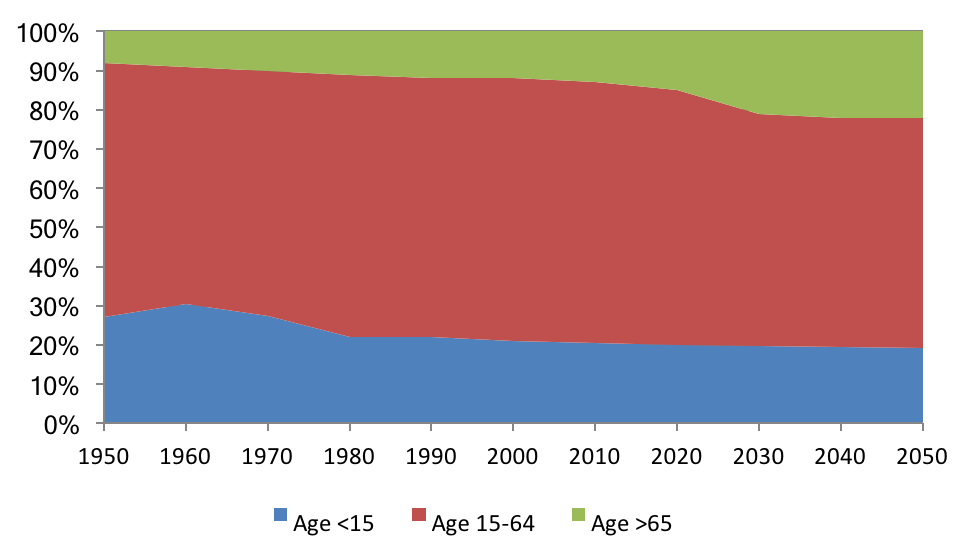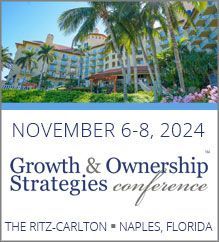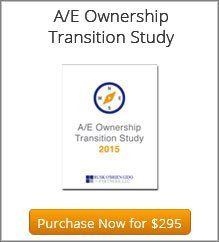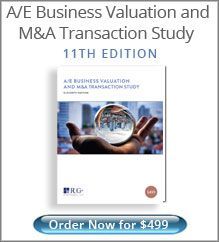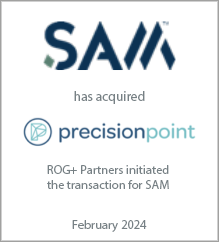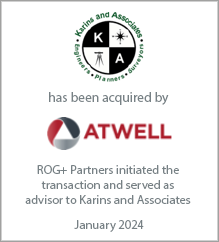Ian has spent the past twenty years working with hundreds of architecture, engineering and environmental consulting firms large and small throughout the U.S. and abroad with a focus on ownership planning, business valuation, ESOP advisory services, mergers & acquisitions, and strategic planning. Ian is a professionally trained and accredited business appraiser and holds the Accredited Senior Appraiser (ASA) designation with the American Society of Appraisers and is a certified merger & acquisition advisor (CM&AA) with the Alliance of Merger & Acquisition Advisors.
When those aging baby boomers just won’t retire
When those aging baby boomers just won’t retire
October 10, 2017
“When Alan turned 60, he announced his intent to retire at age 65.
That was ten years ago.”
Alan co-founded a successful consulting engineering firm when he was in his 30’s. Over the years the practice grew steadily, adding new staff, offices, and owners along the way. When Alan turned 60, he announced his intent to retire at age 65. That was ten years ago. Now, at age 70, he still enjoys his work, and while he’s cut back on hours, business travel, and administrative duties, he still manages a significant portfolio of business. The last time someone asked when he planned to retire, he answered (tongue firmly planted in cheek), “the day after I die at my desk.”
Of course, Alan is a fictional character, but I would wager that many of our readers have one or more Alans in their firms, and may be wrestling with the challenge of how to accommodate such seasoned professionals who are both able and willing to continue in full-time employment while maintaining upward mobility for more junior staff.
Demographic Trends
An interesting demographic trend over the last decade is the aging of the working population, both in the U.S. and globally. According to the Pew Research Center, the population of people age 65 and older has been increasing both in numbers, and as a percentage of the total population since 1950, and this trend is projected to continue through 2050. Furthermore, the rate of participation in the workforce of those age 65 and older has been on the rise since 2007.
Of course, Alan is a fictional character, but I would wager that many of our readers have one or more Alans in their firms, and may be wrestling with the challenge of how to accommodate such seasoned professionals who are both able and willing to continue in full-time employment while maintaining upward mobility for more junior staff.
Demographic Trends
An interesting demographic trend over the last decade is the aging of the working population, both in the U.S. and globally. According to the Pew Research Center, the population of people age 65 and older has been increasing both in numbers, and as a percentage of the total population since 1950, and this trend is projected to continue through 2050. Furthermore, the rate of participation in the workforce of those age 65 and older has been on the rise since 2007.
When you combine the aging workforce trend illustrated above with the emergence of the Millennial generation, which is projected to dominate the workforce for the next thirty years, you get some painful pressure points. These can include:
Boomers postponing retirements AND being unwilling to hand over the reins of management can create real tension in an organization—potentially driving off the top talent below them. The best leaders recognize when it’s time to step back from their senior management roles to create that opportunity for advancement. And the best of the best will do so early enough that their successors will have a sufficient term to achieve their own vision for the firm.
The inability to accurately budget for stock redemption obligations:
If Alan can’t tell us when he plans to retire, how are we supposed to budget for his stock redemption? That kind of financial uncertainty is enough to drive a CFO crazy. The problem can be particularly acute if Alan is still a significant or even a majority shareholder. In response, we are seeing more firms incorporate mandatory divestment clauses into their governing shareholder agreements. In this way, a valued principal like Alan can continue to be employed, even as his shares are repurchased.
The inability to adequately compensate (and thereby retain) top talent:
There’s no doubt that this is the most competitive marketplace for talent that the A/E industry has witnessed since before the 2008 recession. The best employees expect to be compensated appropriately, and the younger generations have shown themselves to be less patient than earlier generations, and less inclined to “put in their time” or “pay their dues.” Ownership remains one of the most effective ways to retain key staff and provide them with the opportunity to build real wealth for themselves through stock appreciation and profit distributions. But this requires older shareholders to be willing to part with their stock, and at a fair price.
Dealing with these challenges often comes down to the question of price. Companies that price their stock too conservatively often create a situation where shareholders nearing retirement cannot be compelled to sell because the profit distributions are simply too great, relative to the share price, to give up. On the other hand, companies that price their stock too high will find it difficult to convince new owners to invest.
The Opportunity
Ultimately, the challenge of the aging boomers (and the up and coming millennials) may also represent an opportunity for firms to rethink roles and responsibilities, and how ownership relates to both. Stock divestment does not have to mean retirement, nor does relinquishing leadership roles, although both are necessary for ensuring the Company’s longevity. At the same time, finding new roles for those boomers that just aren’t ready to retire can be the key to preserving and transferring the wealth of technical knowledge and experience they represent.
Upward mobility traffic jams:
Boomers postponing retirements AND being unwilling to hand over the reins of management can create real tension in an organization—potentially driving off the top talent below them. The best leaders recognize when it’s time to step back from their senior management roles to create that opportunity for advancement. And the best of the best will do so early enough that their successors will have a sufficient term to achieve their own vision for the firm.
The inability to accurately budget for stock redemption obligations:
If Alan can’t tell us when he plans to retire, how are we supposed to budget for his stock redemption? That kind of financial uncertainty is enough to drive a CFO crazy. The problem can be particularly acute if Alan is still a significant or even a majority shareholder. In response, we are seeing more firms incorporate mandatory divestment clauses into their governing shareholder agreements. In this way, a valued principal like Alan can continue to be employed, even as his shares are repurchased.
The inability to adequately compensate (and thereby retain) top talent:
There’s no doubt that this is the most competitive marketplace for talent that the A/E industry has witnessed since before the 2008 recession. The best employees expect to be compensated appropriately, and the younger generations have shown themselves to be less patient than earlier generations, and less inclined to “put in their time” or “pay their dues.” Ownership remains one of the most effective ways to retain key staff and provide them with the opportunity to build real wealth for themselves through stock appreciation and profit distributions. But this requires older shareholders to be willing to part with their stock, and at a fair price.
Dealing with these challenges often comes down to the question of price. Companies that price their stock too conservatively often create a situation where shareholders nearing retirement cannot be compelled to sell because the profit distributions are simply too great, relative to the share price, to give up. On the other hand, companies that price their stock too high will find it difficult to convince new owners to invest.
The Opportunity
Ultimately, the challenge of the aging boomers (and the up and coming millennials) may also represent an opportunity for firms to rethink roles and responsibilities, and how ownership relates to both. Stock divestment does not have to mean retirement, nor does relinquishing leadership roles, although both are necessary for ensuring the Company’s longevity. At the same time, finding new roles for those boomers that just aren’t ready to retire can be the key to preserving and transferring the wealth of technical knowledge and experience they represent.
Latest Perspective
Perfecting the A/E Exit Strategy – Five Key Factors
An enormous A/E generation that kicked off their careers in the 1980s and subsequently started firms or became owners in the 1990s ...
© 2024
Rusk O'Brien Gido + Partners, LLC
Financial Experts for Architects, Engineers, and Environmental Consulting Firms

